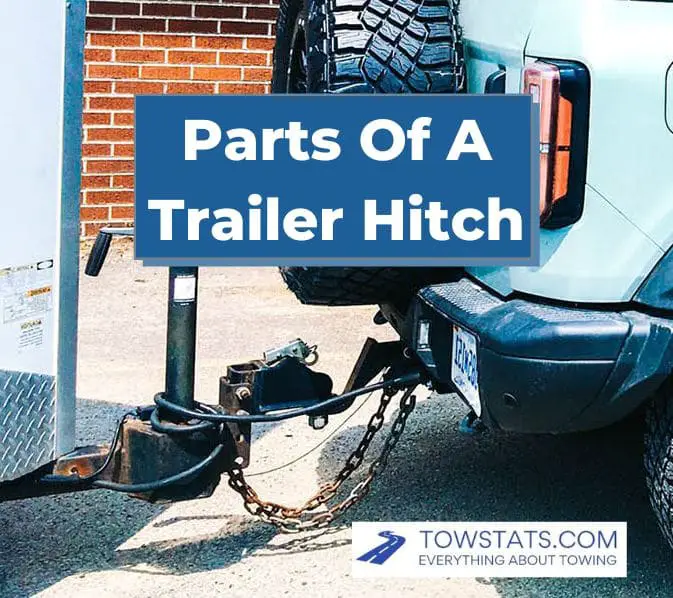If you’re in new to towing, it’s important to know what the different parts of a trailer hitch are and what they do.
In this guide, we will provide a diagram of a trailer hitch and list out of all the parts and their functions.
We’ll also discuss some frequently asked questions about trailer hitches.
By the end of this guide, you’ll be an expert on trailer hitches!
Parts Of A Trailer Hitch: 9 Key Essentials
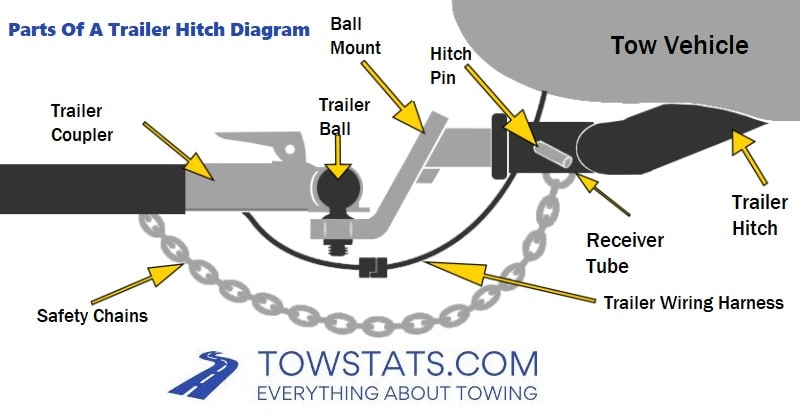
As you can see from the trailer hitch diagram above, there are nine essential components to a trailer hitch.
Each play their own important role in towing your trailer safely and efficiently, and we’ll cover each of them in this guide.
No matter what, it’s important that all components are installed and working properly before you start towing.
What Is A Trailer Hitch?
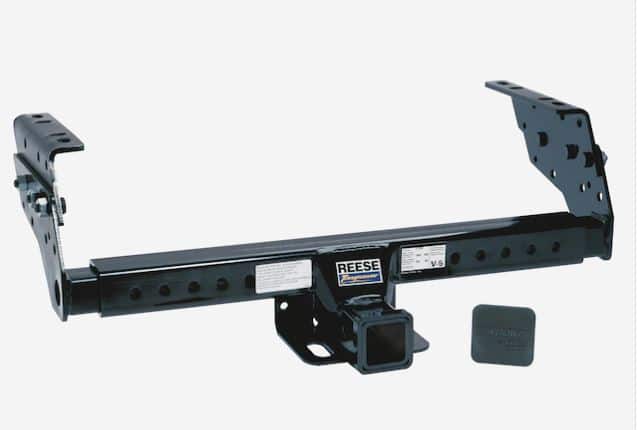
So before we go through all the components of a trailer hitch, let’s first define what a trailer hitch is.
A trailer hitch is the component that is attached to the vehicle (usually by being bolted on) and provides mounting point to allow towing accessories to be used.
Many folks think of a trailer ball when using the term trailer hitch, but that’s technically inaccurate.
The hitch and receiver allow for a towing ball to be used with it, but the trailer hitch stands alone.
The term trailer hitch can refer to several different types of trailer hitches, including the receiver hitches (which are square holes that allow for different type of towing accessories to be used), gooseneck hitches, 5th wheel hitches, and other types of hitches.
Each of these hitches have their own uses and weight limits.
There are even different hitch receiver sizes that correspond to different hitch classes that determine how much weight you can tow.
Make sure to use the proper hitch class for your vehicle.
Ball Mount
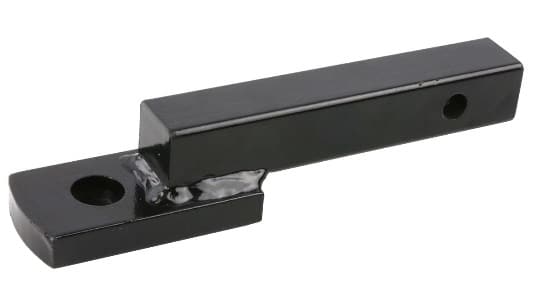
A ball mount is the most recognizable receiver hitch accessory.
It’s made of a shank and trailer ball platform in which the shank inserts into the receiver tube and the platform on the other end allows a trailer ball to be attached to it.
A ball hitch is another term for a ball mount, with the difference being that the ball mount is attached to it as-is.
Some ball hitches may feature welded ball mounts for extra strength.
Trailer Ball
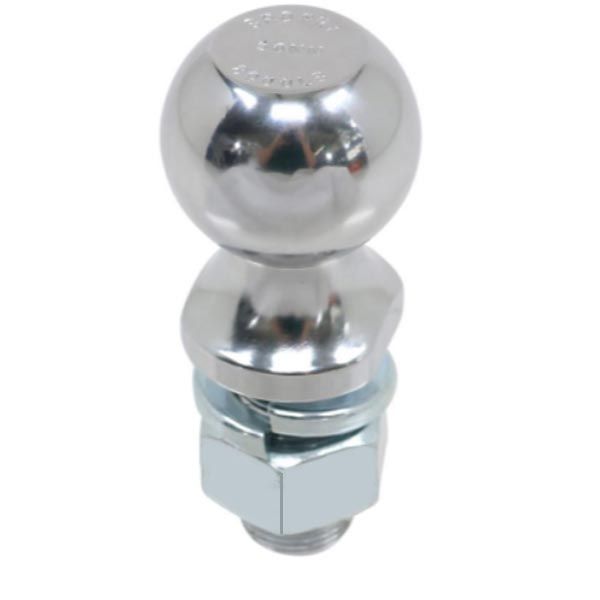
The trailer ball provides a mounting point for a trailer ball coupler.
It is usually tightened on to a ball mount, and are interchangeable in most cases.
There are different trailer ball sizes to accommodate different coupler diameters.
Trailer balls are also commonly referred to as hitch balls.
Hitch Pin
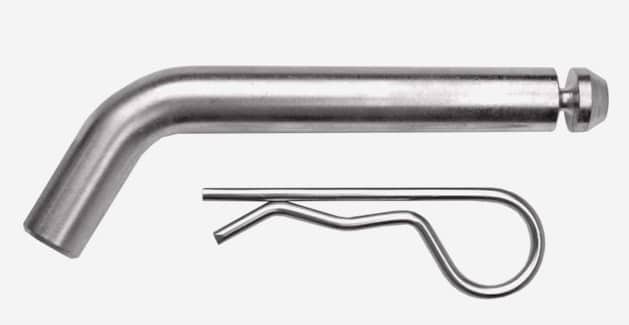
A hitch pin is a metal rod that keeps the shank of your ball mount or other trailer accessories firmly in place inside your receiver hitch.
Most hitch pins have an “L” shape on one side, and a pin hole on the other to them to avoid them sliding out.
Trailer Coupler
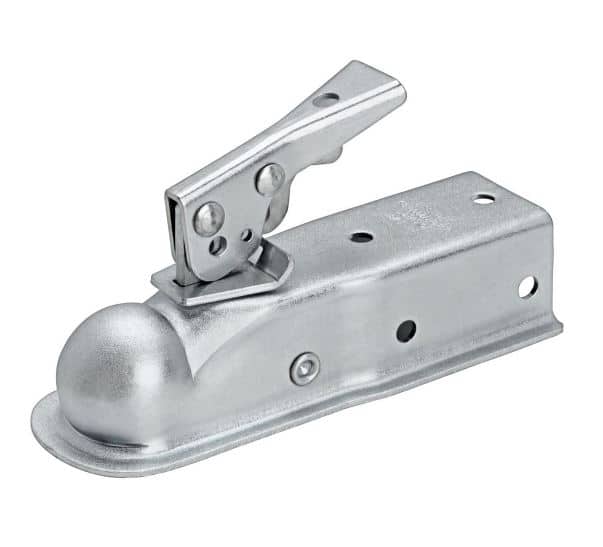
A trailer coupler is the “cap” that fits over a trailer ball on your hitch, allowing you to connect the trailer to your tow vehicle.
Trailer couplers come in predetermined sizes just like trailer balls so they can work safely and efficiently.
Read more: How to measure trailer coupler size.
Safety Chains
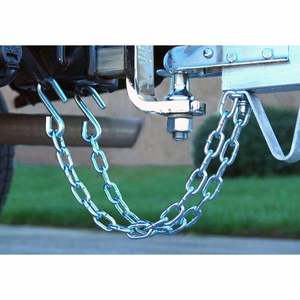
Safety chains are simply two lengths of chain that connect between the tow vehicle and the trailer.
The safety chains serve as a backup in case the trailer should ever disconnect during towing.
You’ll cross the safety chains when towing, attaching them to the vehicle’s trailer hitch and the trailer tongue.
There are also many safety chain laws requiring you to use them, so don’t skip this step!
Learn more in our guide on how to attach safety chains to a trailer.
Trailer Wiring Harness
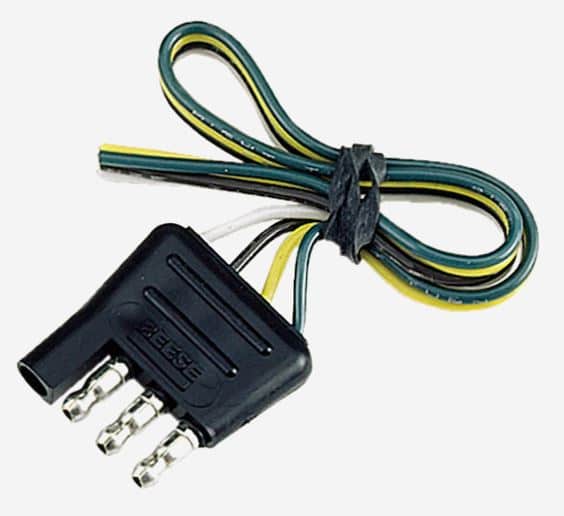
A wiring harness is a set of wires that connect between the vehicle and the trailer to provide power to the trailer’s lights.
This is usually through a 4-pin standard connector.
Some vehicles may offer a 4-pin connector already installed, while others will require one to be added on.
The wiring harness is critical because it allows the trailer’s lights to sync up with the tow vehicle’s lights so someone driving behind you can tell if you are using your brakes or turn signal.
Wiring harnesses can also provide power to trailer brake systems and other items as needed.
Tow Vehicle
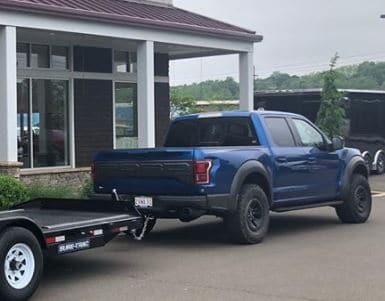
This may seem pretty self-explanatory, but the tow vehicle is the car, truck, or SUV that you’ll be using to tow your trailer.
It’s important to make sure that your tow vehicle can handle the weight of your trailer and anything you’re hauling inside it.
You should always consult your owner’s manual or a professional before attempting to tow anything with your vehicle.
Trailer
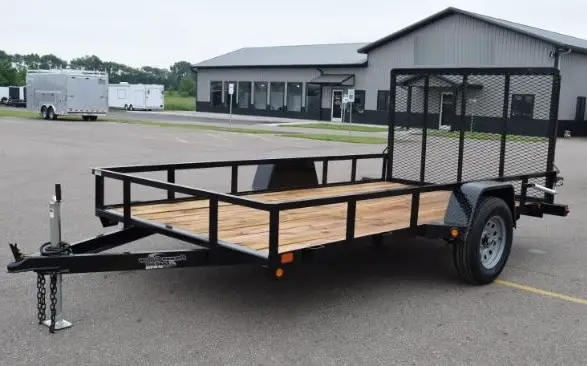
The trailer is the item that has wheels that you’ll be hauling with your tow vehicle, such as a boat trailer, travel trailer, camper, or utility trailer.
Each trailer type and model have their own limitations for speed, weight, and other factors, so you must fully familiarize yourself with your trailer before towing it.
Parts Of A Trailer: Wrapping Things Up
We hope this guide helped to introduce you to different parts of a trailer that you’ll need to know in order to tow safely and effectively.
Make sure to read our other guide on trailer towing safety tips before heading out on the road to make sure your tow is a success.

